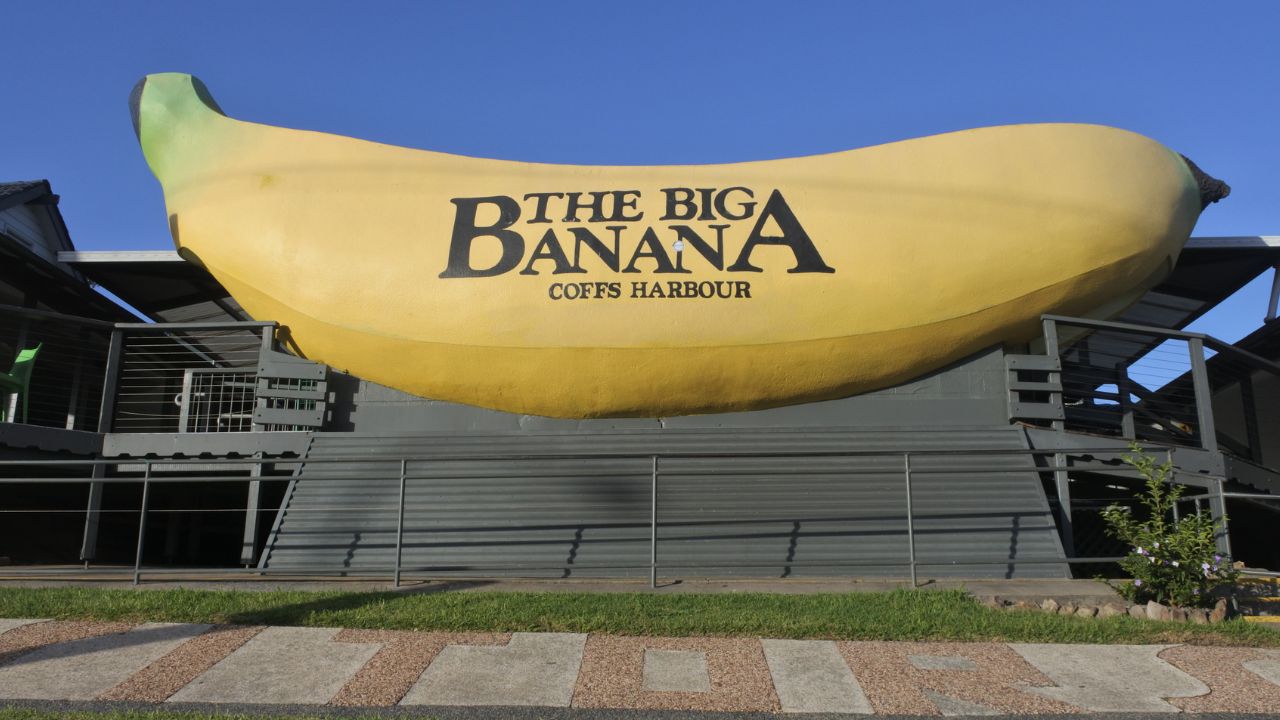Ray White Group Head of Research, Vanessa Rader, has analysed property performance in towns featuring Australia’s famous ‘Big Things’ as part of the upcoming 2025 Ray White Regional Report, finding that these tourist attractions alone cannot transform real estate values.
“What started as a clever marketing ploy in 1964 with Coffs Harbour’s Big Banana quickly sparked a national trend, with communities across the country erecting their own oversized tributes to local industries, produce, and wildlife,” Ms Rader said.
“Today, these structures serve multiple economic functions that extend far beyond their initial tourism appeal, acting as powerful branding tools that help regional towns establish distinct identities in an increasingly competitive landscape.”
Ms Rader’s analysis revealed that coastal locations with ‘Big Things’ generally perform better in property markets compared to their inland counterparts.
“Woombye, home to the Big Pineapple on Queensland’s Sunshine Coast, commands a median house price of $988,500, a remarkable 31.5 per cent above the broader regional Queensland market,” she said.
“Similarly, West Ballina’s Big Prawn sits in a market valued at $882,500, nearly 10 per cent above regional New South Wales averages.”

The research highlighted that natural amenities and accessibility appear more important than novelty attractions when it comes to sustained property value growth.
“These seaside Big Thing towns benefit from lifestyle appeal, proximity to growth centres, and established tourism infrastructure that extends far beyond their oversized monuments,” Ms Rader explained.
The contrast with inland locations was particularly notable in the findings.
“Bowen’s Big Mango, despite the town’s status as a significant agricultural centre, sits in a property market valued at just $480,000, 36 per cent below the regional Queensland average,” she said.
“Mission Beach’s Big Cassowary faces similar challenges at $550,000 despite its coastal location, trailing regional markets by 27 per cent. These gaps suggest that geographic isolation and limited economic diversity can’t be overcome by tourism attractions alone.”
Ms Rader said that some heritage-focused Big Things in wine and tourism regions showed exceptional performance.
“Rutherglen’s Big Wine Bottle shows exceptional 15.7 per cent annual growth and 166 per cent growth over the decade, likely driven by the Murray Valley’s evolution into a premium wine tourism destination,” she said.
“This success illustrates how Big Things can amplify existing economic strengths rather than create them from scratch.”
Tasmania presented an interesting case study where both Big Thing locations outperformed their regional market.
“The Big Penguin town commands $615,000, 12 per cent above regional Tasmania, while Latrobe’s Big Platypus sits marginally above regional averages,” Ms Rader said.
“This suggests the island state’s broader property performance has lifted all markets, regardless of roadside attractions.”
The research also highlighted the limitations of Big Things in economically stagnant areas.
“Goulburn’s Big Merino, celebrating the traditional wool industry, sits 21.8 per cent below regional NSW averages at $629,000,” Ms Rader said.
“Similarly, Humpty Doo’s Big Boxing Crocodile, despite proximity to Darwin, shows minimal 10-year growth of just 8.3 per cent, well below the territory’s broader performance.”
According to Ms Rader, the evidence suggests Big Things work best as tourism amplifiers in areas with strong fundamental advantages.
“They appear incapable of single-handedly transforming property markets in isolated or economically declining areas,” she said.
“While Big Things remain important cultural icons and tourism drivers, their influence on real estate values depends heavily on location, accessibility, and broader economic fundamentals.”

